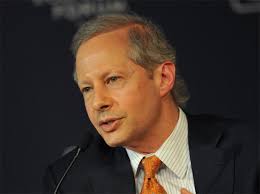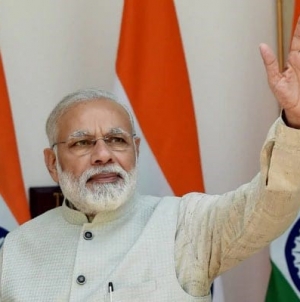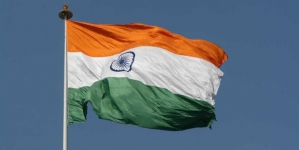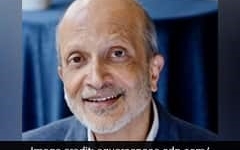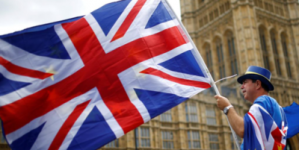-
LONDON: UK’s India Gate To Commemorate Role Of Indian Soldiers From World Wars - 18 hours ago
-
HARARE: Shri Bramha Kumar appointed as the next Ambassador of India to the Republic of Zimbabwe - 1 day ago
-
LONDON: Indian-Origin Principal Wins UK Legal Challenge Over School Prayer Ban - 1 day ago
-
TORONTO: Indian-Origin Doctor Needs ₹ 2 Crore For Legal Fees. Elon Musk Responds - April 22, 2024
-
KINSHASA: India-Democratic Republic of Congo Foreign Office Consultations - April 21, 2024
-
LONDON: UK Court Allows Sale Of Nirav Modi’s Luxury London Apartment - April 21, 2024
-
TEHRAN: Travel advisory for Iran and Israel - April 20, 2024
-
LUXEMBOURG: Shri Saurabh Kumar concurrently accredited as the next Ambassador of India to the Grand Duchy of Luxembourg - April 20, 2024
-
WASHINGTON: Meet Jigar Shah, Indian-American Named In TIME Most Influential List - April 20, 2024
-
LONDON: What Impact Will New UK Family Visa Rule Have On Indians - April 20, 2024
US-India: Ambition & achievement
Kenneth Juster – The
writer is US Ambassador to India
There is no bilateral relationship
in the world that is as broad, complex, and rich in substance as that of the
United States and India. We cooperate on defence, counterterrorism,
cybersecurity, trade, investment, energy, the environment, health, education,
science and technology, agriculture, space, and so much more. While our
strategic partnership has been on an upward trajectory over the last two
decades, the past four years stand out as a time of ambition and achievement.
Our diplomatic coordination flows
from the US commitment to support India’s rise and our shared vision of a free
and open Indo-Pacific region. While the concept of the Indo-Pacific has been
many years in the making, it is in the past four years that our countries have
shown the ambition to turn it into a reality. For the United States, the
Indo-Pacific means that, at a time of great change and challenge, we see India
as a critical partner in preserving and expanding the peace and prosperity that
have underpinned this dynamic region.
We have begun coordinating with
like-minded countries to build out the architecture of this region, while
supporting Asean centrality. Our Trilateral Summits (with Japan in 2018 and
2019) and Quadrilateral Ministerials (with Japan and Australia in 2019 and
2020) have led to greater cooperation, including on maritime security, pandemic
management, regional connectivity, humanitarian assistance and disaster relief,
and cybersecurity. Our mission over the next five years and beyond should be to
give this endeavour further form and substance to enable all countries to
prosper from a region that respects sovereignty and a rules-based order.
As democracies, the United States
and India are committed to peace and diplomacy. In the past four years, we have
purposefully deepened our defence and security cooperation to keep our nations
safe, and to provide security beyond our own borders.
Our bilateral defence and security
partnership reached a new level in September 2018 with the inaugural 2+2
Ministerial Dialogue of US and Indian defence and foreign policy leaders. We
have held three such Ministerials and signed pivotal defence agreements at
each, increasing the interoperability of our forces and defence industries. We
have also expanded the complexity of a robust series of military exercises,
including the first-ever tri-services exercise in 2019 and Australia’s
participation in the Malabar naval exercise alongside Japan.
Reflecting on these and other
achievements, I believe that no country has as strong a defence relationship
with India as does the United States, or does as much to contribute to the
security of Indians. Our close coordination has been important as India
confronts aggressive Chinese activity on its border.
We need the same level of ambition
in the economic sphere, where our trade and investment ties have continued to
grow but are still not reaching their full potential. In 2019, bilateral trade
in goods and services had grown to over $146.1 billion, significantly up from
$20.7 billion in 2001. Approximately 16% of India’s total exports now
head to the United States. The United States is India’s largest trading
partner, and India the twelfth largest partner of the United States. The bottom
line is that no other country contributes as much to job creation, consumer
choice, technology diffusion, and economic improvement for Indians.
Another key pillar of our
partnership is energy, where we have achieved significant results over the past
four years. We launched our Strategic Energy Partnership in 2018 and, with
support from both governments, the United States is now an important source of
energy for India. By 2019, India had become the largest export destination for
US coal, the fourth-largest destination for US crude, and the seventh-largest
destination for US liquefied natural gas. All of this has helped diversify
India’s energy sources. Today, there are over 100 US companies involved with
energy in India, working across all elements of the sector.
Health and biomedical innovation has
also been a top priority for both countries. Our history of successful
cooperation shaped our joint response to the Covid-19 pandemic. Experts from
the US Centers for Disease Control and Prevention (CDC) have supported India’s
efforts with technical guidance and training, including on contact tracing,
diagnostic testing, and infection prevention and control at health facilities.
Hundreds of Indian graduates of CDC training programmes have been at the
forefront of India’s response to this virus.
In addition, US and Indian
scientists have collaborated to develop vaccines and treatments for Covid-19.
There remains enormous potential for further work between our health sectors,
including to develop more secure medical supply chains. Our health cooperation
has improved lives not just in the United States and India, but for people
around the world.
In great democracies such as ours,
governments listen to public sentiment. Our people-to-people ties form both a
strong foundation and a driving force for our relationship. Leaders in both
countries have recognised that getting this relationship right is important for
us and for a free and open Indo-Pacific region. As a result of their actions,
the US-India Comprehensive Global Strategic Partnership is strong, positive,
and on an upward trajectory.
I am proud of what we have
accomplished over the past four years, and am confident that the next US
administration will continue this trend with our Indian partners – as each
recent US administration had successfully built upon the work of its
predecessor in enhancing ties with India.


















